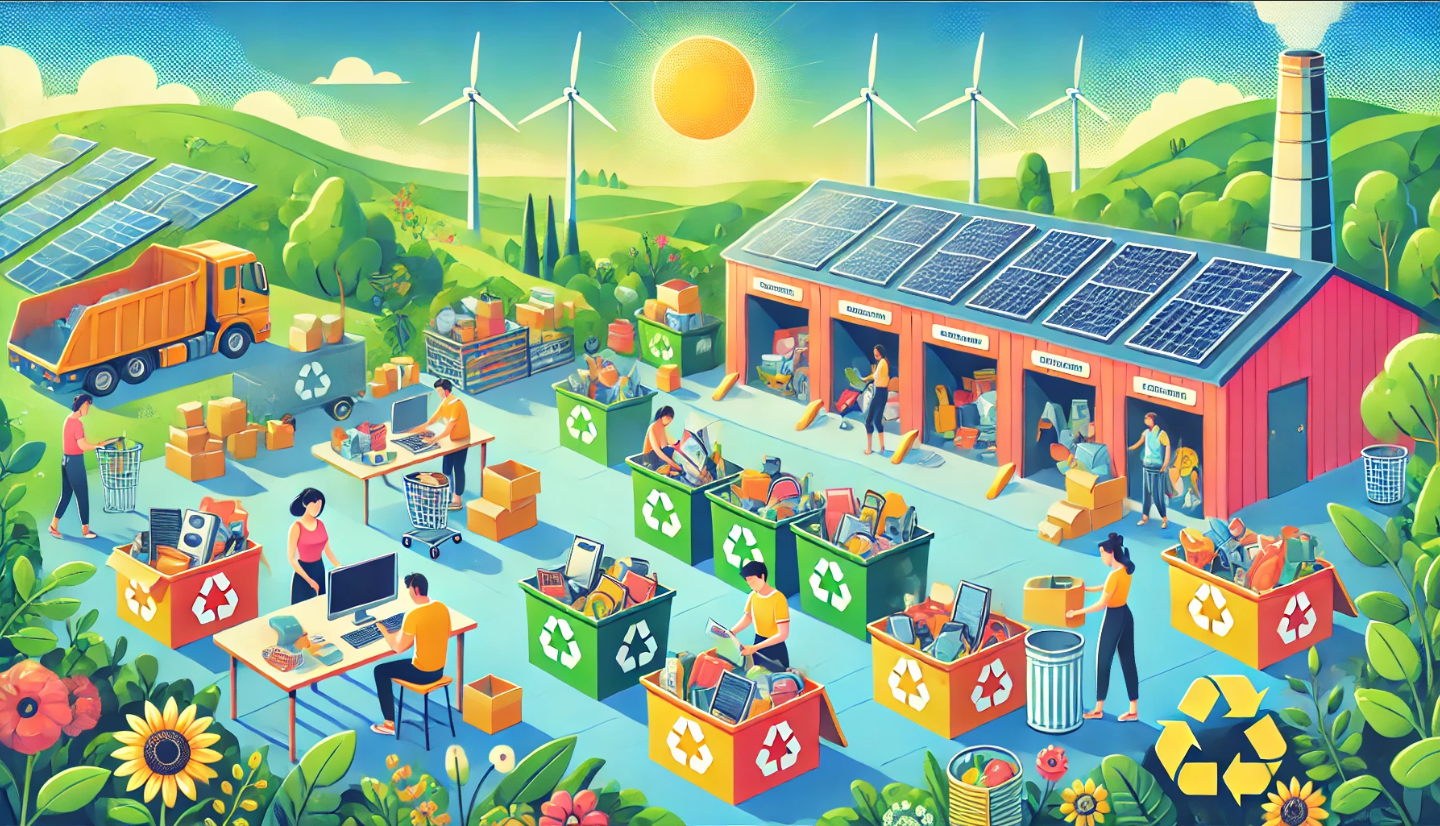
Recycling Unwanted Items – A Practical Guide to Sustainable Decluttering
Do you have a pile of unwanted items cluttering up your home? Recycling these items can be a sustainable way to
declutter your space while contributing to a healthier environment. From old furniture to broken electronics, there’s a responsible way to dispose of almost anything. This guide will walk you through effective methods for
recycling unwanted items, highlight eco-friendly disposal tips, and explore how
professional services can make the process easier.
Why Recycling Unwanted Items is Important
Recycling goes beyond clearing space in your home—it’s about preserving the planet for future generations.
Key Benefits:
- Reduces Landfill Waste: Keeps reusable materials out of landfills.
- Conserves Resources: Many recycled materials can be repurposed into new products.
- Minimizes Pollution: Proper disposal prevents harmful chemicals from leaching into the soil or water.
- Supports Sustainability: Recycling encourages responsible consumption and waste management.
Steps to Recycle Unwanted Items
1. Take Inventory of Your Junk
- Go room by room to identify items you no longer need.
- Group items into recyclable, donatable, and trash categories.
2. Research Local Recycling Centers
- Many cities have facilities for specific materials like electronics, plastics, and metals.
- Check your municipal website for curbside recycling guidelines.
3. Donate Usable Goods
- Charities and thrift stores often accept gently used items.
- Some organizations even offer free pickup for larger donations like furniture.
4. Handle Hazardous Materials Responsibly
- Take items like paint, batteries, and cleaning chemicals to certified disposal sites.
- Never mix hazardous materials with regular trash.
5. Partner with Professional Recycling Services
- For large-scale cleanouts, junk removal companies can sort and transport items to appropriate facilities.
Common Items You Can Recycle
| Category | Examples | Recycling Method |
|---|---|---|
| Furniture | Chairs, sofas, tables | Donation, upcycling, or recycling centers |
| Electronics (E-Waste) | TVs, laptops, phones | Certified e-waste recycling facilities |
| Clothing & Textiles | Clothes, linens, shoes | Textile recycling programs, donation |
| Plastics | Bottles, containers, packaging | Curbside recycling, specialty centers |
| Yard Waste | Leaves, branches, grass clippings | Composting, green waste facilities |
| Hazardous Materials | Paints, batteries, chemicals | Specialized hazardous waste facilities |
Eco-Friendly Tips for Recycling
1. Repurpose Old Items
- Turn old wood into DIY furniture or use jars for storage.
2. Recycle Electronics the Right Way
- Many electronics contain precious metals like gold and copper that can be reused.
3. Compost Organic Waste
- Use kitchen scraps and yard debris to create nutrient-rich compost for gardening.
4. Minimize Plastic Usage
- Invest in reusable alternatives like stainless steel bottles and cloth shopping bags.
5. Choose Eco-Conscious Junk Removal Services
- Many services specialize in recycling and donating items, ensuring minimal landfill use.
FAQs About Recycling Unwanted Items
1. What items can’t be recycled?
- Items like mixed-material furniture and certain hazardous materials often require special handling.
2. How do I recycle old electronics?
- Take them to certified e-waste recycling centers or participate in manufacturer take-back programs.
3. Are recycling services free?
- Many facilities accept certain items for free, but fees may apply for large or hazardous items.
4. What’s the best way to recycle clothes?
- Donate usable clothes or take damaged textiles to a textile recycling program.
5. How can I find local recycling options?
- Check your city’s website, use online directories, or consult with professional junk removal services.
Quick & Reliable
We are available 7:00am-7:00pm Monday-Saturday

Rolloff containers and dump trailer rentals designed to meet the specific needs of homeowners and contractors alike
Navigation
Rolloff Containers
Working hours
- Mon - Sat
- -
- Sunday
- Closed
All Rights Reserved | Fleur De Lis Dumpster Rental
